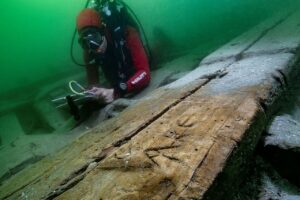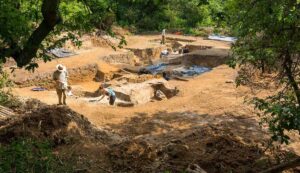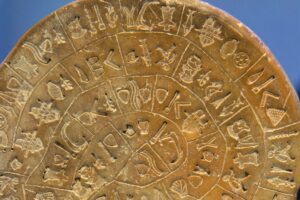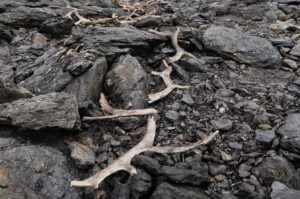Under 1,500 meters of seawater off the Chinese coast, a mother lode of artifacts lurked for centuries. But the find couldn’t hide forever from China’s increasing interest in deep-sea archaeology.
A submersible found the two shipwrecks on the South China Sea floor late last year. Researchers are now picking through what remains of the ships, which date to the Ming Dynasty. Inside and around them, a bevy of relics lie scattered and stacked.

Porcelain urns, pots, and vases cover the two sites. Photo: NCHA
Porcelain urns and processed timbers likely number in the hundreds of thousands at the site, according to China’s National Cultural Heritage Administration (NCHA). One expert advised The Global Times that the timbers likely came from southeast Asia, and could be used to erect buildings “like the palace of the emperor.”

Processed logs for Ming Dynasty construction. Photo: NCHA
The ships sailed midway through the Ming Dynasty (1368-1644). The “No. 1” wreck dates to the time of Emperor Zhengde (1506-1521), and the No. 2 wreck predates it to the reign of Emperor Hongzhi (1488-1505). They lie on the sea floor just 20km apart.
They were also headed in different directions along the Maritime Silk Road, the NCHA found. The wrecks could offer insight into that route, less famous than the land-based Silk Road but still important.
Officials have sanctioned plans for further research at the two sites through April 2024. The plan’s ultimate goal is site preservation, according to the NCHA.






